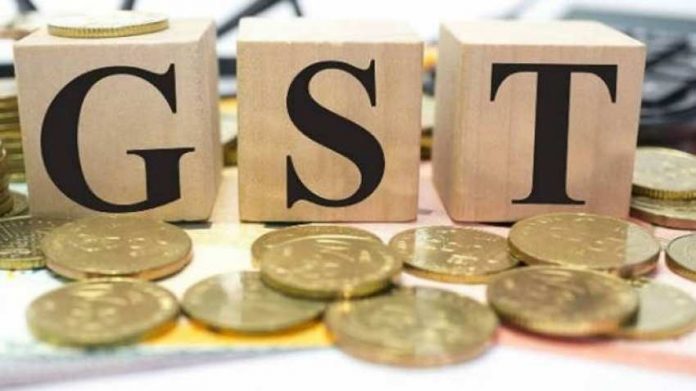Once fully implemented and linked with direct taxes, goods and services tax (GST) would benefit the economy, help bring in transparency, make small businesses strong, create more employment and ultimately reduce tax burden for the common man.
It’s been a year since GST has been implemented in India. It all started with panic and confusion and everyone was busy dealing with the teething problems of this huge tax reform. The nation was sceptical, be it a financial expert or a common man, on how successfully GST would function. The GST Council met a number of times post implementation to consider the difficulties of taxpayers. These meetings resulted in issuing of number of notifications by the tax department, some relating to relaxation of certain provisions of law whereas others related to extension of due dates for compliances. One can now say that the dust is gradually settling down, which is apparent from the clarifications made by the department by issuing notifications and circulars to deal with various issues such as application of refunds which has resulted in smooth sanctioning of such refunds. Historic implementation of e-way bill from 1 April 2018, has aided GST in meeting its idea of “one nation, one market, one tax”.
GST is a destination/consumption-based tax which is modelled on the concept of value addition where credit of taxes already paid can be availed subsequently. At the time of implementation, GST law mandated filing of various returns including 3 basic returns i.e. GSTR 1, GSTR 2 and GSTR 3. However, due to the technical glitches of the GST Network (GSTN), the government has deferred the requirement to file GSTR 2 and GSTR 3.
Further, in order to ensure timely revenue collection as well as providing short-term relief to the taxpayers, the department has introduced GSTR 3B which is a monthly summary return for payment of tax liability. The government has also designed a grievance redressal portal for lodging complaints by taxpayers and other stakeholders. Also, recently an IT grievance redressal committee has been established to help the tax payers in filling of returns smoothly.
In the GST regime, goods and services are taxed under a homogeneous scheme at the applicable rate of 0%, 5%, 12%, 18%, and 28%, across India. There are special rates imposed on specific products such as gold and rough, precious and semi-precious stones. An additional cess of 22% is levied on certain products such as tobacco, luxury cars, and carbonated drinks. There is an expectation that the slab rates will be further rationalized to three and tax rates lowered, as collections increase, thereby, reducing the overall burden/cost for the ultimate consumer.
GST has a broader tax base as compared to the erstwhile indirect tax laws. Under the Central Excise law, there was an exemption for small scale units (SSI) from levy of duty up to turnover of Rs.1.5 crore. Under service tax laws, an exemption was provided if the aggregate turnover was up to Rs.10 lakh in the preceding financial year. The threshold limit for levy of VAT varied from state to state ranging between Rs.5 lakh to Rs.20 lakh. Now, in the GST regime, the threshold limit for levy of GST has been fixed at Rs.20 lakh(Rs.10 lakh for special category states). Several suppliers have taken voluntarily registration so that they can avail and pass the benefit of input tax credit, and also because the large organized players are insisting on full compliance by their suppliers/vendors. Thus, GST law has brought under its ambit even the small suppliers. To ensure there is no major compliance burden to small businesses, a relief in the form of composition levy is also provided to certain categories of suppliers.
While the overall intent of the GST is laudable, this tax reform has brought new hurdles for MSMEs in conducting the business. The MSMEs have to take registrations in each such state from where they are making a supply. The other side of the coin is that though the compliance burden will increase for MSMEs, it would also lead to efficiency in the maintenance of books of accounts. This in turn, would provide the MSMEs a prominent benefit of obtaining loans from financial institution for the expansion of business and would help them to borrow from formal sector instead of informal one. India needs strong MSMEs to create more and more employment. Hopefully, with better accounting and compliance, gradually, MSMEs will gain strength and grow their businesses.
During the pre-GST regime, the turnover disclosed by the taxpayer under the direct tax law and indirect tax law differed which gave way to tax evasion. The GST number is linked with PAN issued by the income tax department which has established a relationship between direct taxes and indirect taxes and will help to reduce tax evasion to a great extent. GSTN has developed a robust IT system which has facilitated data exchange and in the long run will ensure a better tax compliance. According to data released by the government for the period July 2017 to June 2018, the GST collections stood at Rs.11.03 trillion, indicating an average monthly collection of approximately Rs.91,917 crore.
Post introduction of GST, both direct and indirect tax revenues have got a boost. Though India’s tax to GDP ratio is lower than many other comparable economies, it is expected that the tax-GDP ratio will see an increase of 30 basis points (bps) each in the financial years 2018-19 and 2019-20 according to the medium-term expenditure framework (MTEF) statement tabled in the Lok Sabha. As direct and indirect tax data bases get linked, it only needs few data analytic tools to throw up any discrepancies and for the revenue authorities to take necessary action. Thus, it is expected that India’s tax-to-GDP ratio should improve significantly in near future. The increase in tax-to-GDP ratios would enable the government to lower the rate of taxes, thereby, providing overall benefits to public without losing the revenue. It also makes sense from vote politics as well.
The implementation of GST has been a daunting task and is still in the process of settling down.
Nevertheless, GST should enormously benefit the Indian economy in the long term due to its unparalleled benefits including uniformity of taxes, elimination of cascading effect of taxes and improved efficiency in logistics. After all, it’s rare that for any tax, government, industry and common man are by and large positive and eager to see its full results benefitting the whole nation.
FAQs
1. What is the threshold limit for opting composition scheme?
Businesses with an aggregate turnover in the preceding financial year not exceeding Rs.1 crore can opt for composition scheme. Only manufacturers, dealers and restaurants that do not serve alcohol can opt for composition scheme. In the 28th GST Council meeting it has been recommended that the such limit of turnover for opting for composition scheme would be raised from Rs.1 crore to Rs.1.5 crore.
2. What is IT-grievance redressal mechanism?
It has been decided by the government to put in place an IT-grievance redressal mechanism to address the difficulties faced by a section of taxpayers owing to technical glitches on the GST portal. In this regard, GST Council has delegated powers to an IT-grievance redressal committee to approve and recommend to the GSTN the steps to be taken to redress the grievance and provide relief to the taxpayer. The relief could be in the nature of allowing filing of any form or return prescribed in law or amending any Form or Return already filed. However, where the problem relates to individual taxpayer, due to localised issues such as non-availability of internet connectivity or failure of power supply, this mechanism shall not be available.
3. What is an e-way bill and what is the current status of its implementation across the nation?
E-way bill is an electronic way bill for movement of goods of more than Rs.50,000 which can be generated on the e-way bill portal. Generation of e-way bill is mandatory for intra-state as well as inter-state movement of goods for all states. However, no e-way bill is required to be generated in certain scenarios like movement of goods in a non-motor vehicle, goods transported under Customs supervision or under Customs seal, goods transported by rail where the consignor of goods is the central government, state governments or a local authority, etc.












